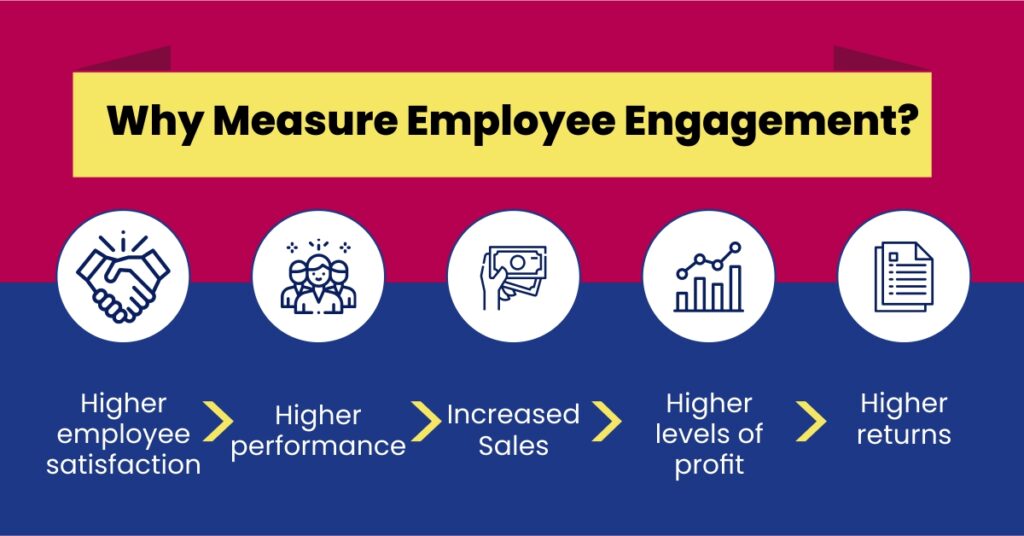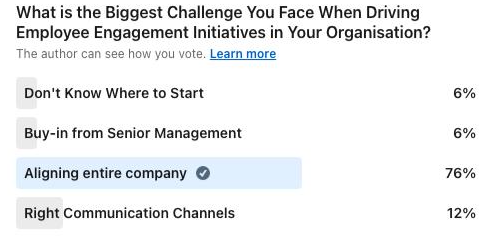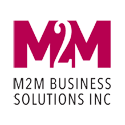Employee engagement or workplace engagement is no longer a mere buzzword. In one of my earlier LinkedIn articles, I talked about employee engagement – what it is and why leaders need to focus on it. Check out the post if you haven’t, but let me summarise the article for you;
● About 71% of C-level executives and leaders agree that workplace engagement is important to their success.
● Higher engagement reduces absenteeism by 41% and increases productivity by up to 22%.
● Workplace engagement can reduce employee turnover by 51% and increase profitability by 21%.

Workplace engagement translates into higher employee satisfaction which results in improved performance leading to increased sales, higher levels of profit, and increased returns. Most importantly, it helps in building a happier organization, which makes ground for enhanced customer experience.
So yes, workplace engagement is a key driver of success, and you as a leader know it. But then why is it that only about 36% of employees in 100,000+ businesses actually feel engaged?
There certainly is a big gap. To identify the reason for the gap, I ran a survey to find out the key challenges businesses and leaders faced in driving workplace engagement- here’s the result we got.

The verdict seems to be loud and clear. Aligning the entire company is indeed one of the biggest challenge leaders face when driving such initiatives
So here, let me share a few ways you can boost employee engagement company-wide and make it a success.
1. Connect the Team with Core Values and Mission
An interesting study points that 61% of the employees don’t even know their company’s mission statement. Worse, 57% of those who know don’t feel connected with it or motivated by it. One of the root causes of disengagement I’ve observed in companies is a disconnect between a company, what it does and its team.
If this is the problem, you mostly need a professional intervention that can help you build a workforce aligned to a company’s mission and values. This gives them a higher purpose which leads to increased engagement. While there is no one way to solve this problem, here are few possible directions you can think about?
● What does your company’s mission statement mean to your employees as individuals?
● At what level is the disconnect – top leadership, senior management, mid-level or junior level?
● Is there a disconnect between your company’s mission statement and its core values?
● Has the mission statement been created autonomously?
● Is there a need to bring a change in your mission statement with evolving times?
2. Build the Army
True leaders create an army of leaders. And when you have an army of next-generation leaders, it automatically results in increased participation and higher workplace engagement. I talked about building the army in a post where we delved into how leaders can create an army of truly agile leaders.
Most importantly, it is essential to create the right workplace environment where leaders can nurture talents and employees feel encouraged to participate.
3. Prioritize Feedback
One of the key enablers of employee engagement is listening to what your team has to say about work, the culture at work and their challenges. There are many ways you can invite feedback from your team, such as;
● Anonymous pulse surveys
● One on one sessions
● Professional intervention
Choosing the right method would depend on a lot of factors, such as your team size, your goals, and the level of engagement in the team. Professional intervention allows you to choose the aptest method and create an environment where your team feels encouraged to talk about issues they face.
While it is crucial to choose the correct feedback collection method, it’s equally important to respond to the feedback effectively. Not responding to feedback could lead to further disengagement as employees feel their opinion is not valued.
4. Set up Engagement Team
When driving such initiatives, it is essential to involve everyone across the board. For a larger organization with multiple business departments, this could be a slightly more complicated process. Engagement boards or task force can help streamline the initiative and bring everyone on the same platform.
For instance, when we work on driving workplace engagement with our clients, one of the first steps is to create a workplace engagement task force that will initially drive the importance of employee engagement. This helps to get everyone involved while also understanding the unique challenges faced by each department.
5. Focus on Employee Wellness
There is sometimes a flip side to high employee engagement—the possible risk of burnout. We have often witnessed this where an organization initiates a workplace engagement drive enthusiastically but soon steers into burnout. There is an unseen but close relation between engagement and wellness. It’s not easy for employees to engage in the workplace when they are overworked or feel stressed.
Many companies only evaluate physical wellness while ignoring the emotional wellness of an employee. Thus, while check-ups and gym memberships are great, don’t ignore signs of emotional stress your team may be showing. There are many ways to tackle this- the right method will depend on the core issue your team faces. However, a few ways to increase employee wellness.
● Set realistic targets when driving engagement initiatives. Remember, it is small changes that make a big impact.
● Understand reasons for physical or emotional burnout in your employees through feedback and surveys.
Driving workplace engagement initiative in an organization can boost productivity and help in building a happier organization. While these are some of the ways, many other small steps can help you too, such as;
1. Recognize contributions and give gratitude and rewards.
2. Build a transparent work environment.
3. Integrate workplace engagement in your hiring process.
4. Encourage social gathering among teams and departments.
5. Invest in team building and training activities.
Choosing the right method or a combination of ways of increasing employee engagement should be done after identifying the key problem areas and the end goals of the drive.
And while you focus on choosing the right employee engagement method, also think about the tools you will need to make your drive a success. We’ll talk about the tools in part 2.
If you think you need some help in identifying the right method of increasing workplace engagement, let’s get on a call and understand it better together.
You can schedule a call with me using the link below.


